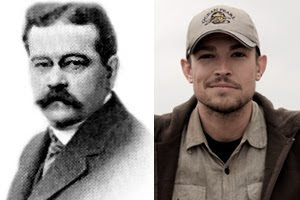
A new series is starting on The National Geographic Channel(Nat Geo) called Beast Hunter. The show is set to begin on March 4th, 2011 at 9pm/8c, showing its first two episodes. Beast Hunter is hosted by Pat Spain, a biologist and explorer who travels the globe in search of mythical creatures, immersing himself amongst the tribes, people and cultures on his quest to find the truth between fact and fiction. In the show Pat will search for biazarre creatures and cryptids. Creatures include the Orang Pendek, Mapinguari, Mokele Mbembe, Caddy the Sea Serpent, and Mongolian Death Worm.
The first episode includes the Orang Pendek and is titled "Man Ape of Sumatra"
In the vast jungles of mystical Sumatra, locals have reported seeing a creature that looks something like an ape, yet it walks just like us. They've named it "Orang Pendek" - the little man of the forest. A recent scientific discovery proposes that another species of humans - nicknamed 'hobbits' - did once live in Indonesia. So could there be a new great ape waiting to be discovered? Or is it possible we're not the only human species living on earth? Biologist and beast hunter Pat Spain investigates.

















